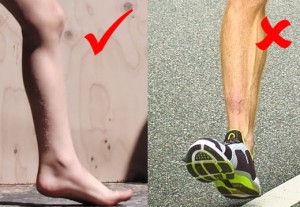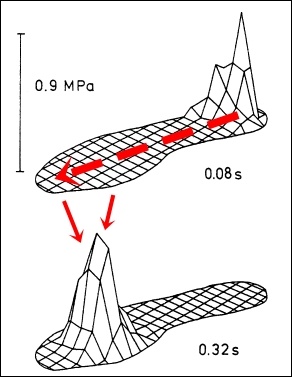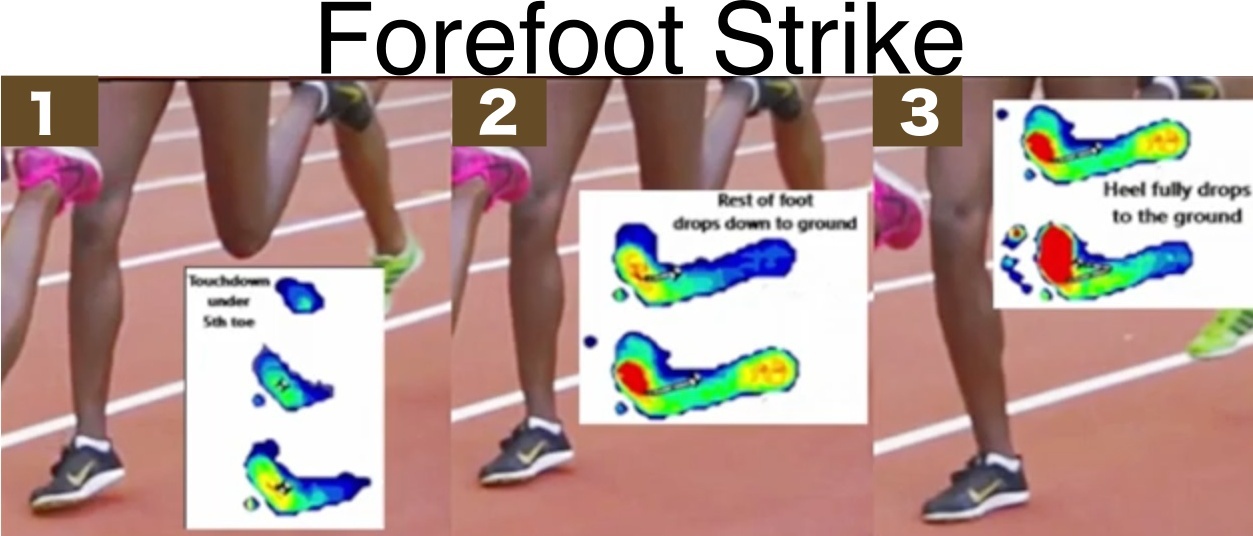In running, foot strike matters immensely because the most change in impact occurs when runners change their foot strike, whereby heel striking leads to the biggest increases in a number of impact variables that are greatly minimized in forefoot running. Whats more, the heel is most vulnerable to chronic injury in heel strike running, even if a running shoe with thick cushioning under the heel is worn.


Research on impact mechanics in running (references below article) tells us that during heel strike running, the heel lands well in front of the body which increases the rate of sudden deceleration. More specifically, it’s this deceleration force that also generates a collision force and a shock-wave which penetrates through the heel pad.

Whats worse, the heel strike shock-wave was found to cause unusually intensive vibrations in the foot and legs soft tissue compartments, which also damages the bones and ligaments during repetitive loading cycles.


This is why heel strike running will bring mixed success because more time seems to be spent treating injury than training. What’s surprising is that this kind of distress at the heel is made worse by cushioned running shoes as cushioned intervention was found to actually amplify heel pounding. Here’s more on that!
The good news is, it’s really well sourced that heel injury is incredibly rare in forefoot running simply because initial contact on the foot is not made on the heel, but on the balls of the foot. Then, the heel lowers to the ground where impact on it is almost barely measurable, shown below:


Forefoot running prevents the kind of impact that damages the foot, especially the heel. This is because the most impact-absorption occurs on the forefoot where impact is better able to spread-out evenly, since the forefoot is the largest contact-point of the foot that strikes the ground. This is hugely significant in reliably and sustainably minimizes impact at the heel.
Based on all the information that is known, forefoot running naturally engages more optimal mechanical arrangements that prevents impact from being amplified, not just on the heel, but across multiple sites on the body, including the shin, knee, hips and lower back! In that light, here are all the evidence-based reasons forefoot running is better than heel strike running.
If you’ve enjoyed my blog post, you’ll love my YouTube channel, here, where I show why forefoot running is the running style that works for everyone!
References:
Enders et al. (2014). The effects of preferred and non-preferred running strike patterns on tissue vibration properties.
Enders et al. (2012). Analysis of damped tissue vibrations in timed-frequency space: a wavelet-based approach.
Gruber et al. (2012). Footfall patterns during barefoot running on harder and softer surfaces.
Wakeling et al. (2003). Muscle activity reduces soft-tissue resonance at heel-strike during walking.
Wakeling et al. (2002). Muscle activity damps the soft tissue resonance that occurs in response to pulsed and continuous vibrations.
Bretta Riches
BSc Neurobiology; MSc Biomechanics candidate, ultra minimalist runner & founder of RunForefoot. I was a heel striker, always injured. I was inspired by the great Tirunesh Dibaba to try forefoot running. Now, I'm injury free. This is why I launched Run Forefoot, to advocate the health & performance benefits of forefoot running and to raise awareness on the dangers of heel striking, because the world needs to know.
Latest posts by Bretta Riches (see all)
- Can You Run In Barefoot Shoes? Yes, But DON’T Heel Strike! - 21/07/2024
- Why Cushioned Running Shoes Are Really Bad for Your Feet - 19/07/2024
- Do Cushioned Running Shoes Cause Injuries? - 17/07/2024
